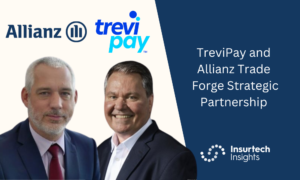You need more than a product. You need to surround the product with proper execution, the right people and sustainable partnerships.
Steve Boyd at Brown & Brown: Every day I probably see a dozen headlines about new insurtech breakthroughs and deals, but how many will actually succeed? How does one separate the leaders from the pretenders? Insurtech leadership isn’t about buying the technology, nor is it solely about inventing the technology.
Insurtech innovation is leveraging technology to improve the insurance experience. And technology is effective only when it is integrated into business processes and workflows and delivers measurable results over time. After all, insurtech should change the way insurance is sold.
Although I didn’t realize it when I started my first job in the ’80s, I was about to devote my entire career to insurtech innovation. Back then — long before program administrators would adopt standard software — there was no such thing as insurtech. Little did I know as I drove up and down the West Coast installing software on agency systems that I was on the cusp of something transformative.
That was 30 years ago, but the lesson is clear: It’s impossible to build a culture of insurtech innovation overnight. Growth is the result of a relentless pursuit of better ways to underwrite and service commercial insurance — enabled by technology.
This is not to take anything away from startups; they’re developing game-changing solutions. But to thrive as an insurtech innovation leader, you need more than a product. You need to surround the product with proper execution, the right people and sustainable partnerships.
No. 1. Execution: Commit to Continuous Improvement
When you’re an MGA and not the risk bearer, you’re less susceptible to market swings but more vulnerable to obsolescence. So, you have to out-execute the market.
It helps to have what I call a healthy paranoia — a state of vigilance where you’re always looking around the corner, keeping an eye out for the next challenge or potential disruption. Behind that paranoia must be humility, an admission that we don’t have all the answers and that, if we don’t remain alert, we could easily get tripped up and overtaken.
We must constantly ask ourselves how we can infuse established businesses with technology and analytics that will help them do what they’re doing better and convert them to a digital state that will survive disruption. We must take advantage of market disruptions to launch innovative products and write business even as other MGAs are exiting markets.
The heartbeat of innovation is continuous improvement, an inexorable pursuit of unattainable perfection, and it starts by questioning the status quo. MGAs are best positioned to play the role of facilitator, enabling efficiency for carriers, producers and the end customer. A facilitator’s role is to know what its partners need to be more efficient — to understand what will save them time, reduce costs and manage their capital.
Over time it’s possible to build an entrepreneurial incubator that helps partners along the value chain gain a competitive advantage. As an MGA, seek to provide fast and accurate quotes for coverage against a volatile peril, backed by data collected from a number of external sources, with little input required of the agent. Not only will you reduce the agent’s time, labor and costs, but you’ll also provide benefit to the carriers, who can receive reports that show exactly how their capital is being deployed. Arrowhead developed such a program; after 2 1/2 years, it’s become successful and profitable.
No. 2. People: Identify the Entrepreneurial Spirit
Every organization, regardless of what it does, should recognize that its most important asset is its people. Your team members don’t have to be Elon Musk or Tim Cook, but they must have a passion for what you do and continually strive to take the friction out of insurance. Those with an entrepreneurial spirit are curious, deeply engaged, proud of their craft — and unafraid to experiment and push boundaries in pursuit of a better way.
As it happens, with the right people in place, leadership will play an important role by playing less of a role. Insecure leaders can have a chilling effect on innovation. An effective leader insists on forward momentum over personal agendas, communicating that every team member belongs and that their contributions are valued. Rather than competing internally, teammates can then channel their energy toward doing what’s best for customers.
As a leader, you also need to keep your ego and pride in check, and that’s never been more important than during the pandemic. There’s something about a turbulent period that fosters humility and reflection. It gives us an opportunity to reflect on everything we do and why — because it’s often difficult during normal day-to-day operations to see the forest through the trees and not to mistake movement for progress. Every team member must gain a clear understanding of what the organization is capable of, where the gaps are and where it needs to go.
No. 3. Partners: Get Each One Invested
The true mark of success is performance, and that’s not possible unless every party brings its best to the table. Insurtech startups bring technical expertise, digital and advanced analytics, agile development and quick decision-making. Insurance organizations bring industry knowledge, a broad customer base, historical data, the capital and an ability to implement and manage change.
A program administrator is the nexus of this partnership and, as the facilitator, must ask the questions that help the partners collectively arrive at the desired result. Ask questions such as:
- What does the carrier need to improve profitability on a book of business?
- What do producers need to improve their service or make the underwriting process less painful?
- What do insureds need to make their lives easier?
The successful MGA must evaluate opportunities in the insurtech space and adapt them to existing infrastructures to simplify commercial insurance buying, servicing and claims. After vetting an insurtech offering, for example, why not take the next step and do a “proof of concept” with a handful of producers in a carefully controlled pilot? If the pilot is successful and sustainable performance can be predicted, it can be rolled out across the entire program. Making prudent investments in technology, data and analytics will position your MGA to grow programs at a time when hard markets are ahead and risks will only become more complex and challenging.
Remember, you don’t make a penny until your partners sell something. Maintain a shared interest in their success — which means that, when a carrier considers making an investment, you should participate in the discussion, the evaluation process and the execution. Better yet, you should be initiating the discussion.
Source: Insurance Thought Leadership
Share on linkedin
LinkedIn
Share on twitter
Twitter
Share on facebook
Facebook









